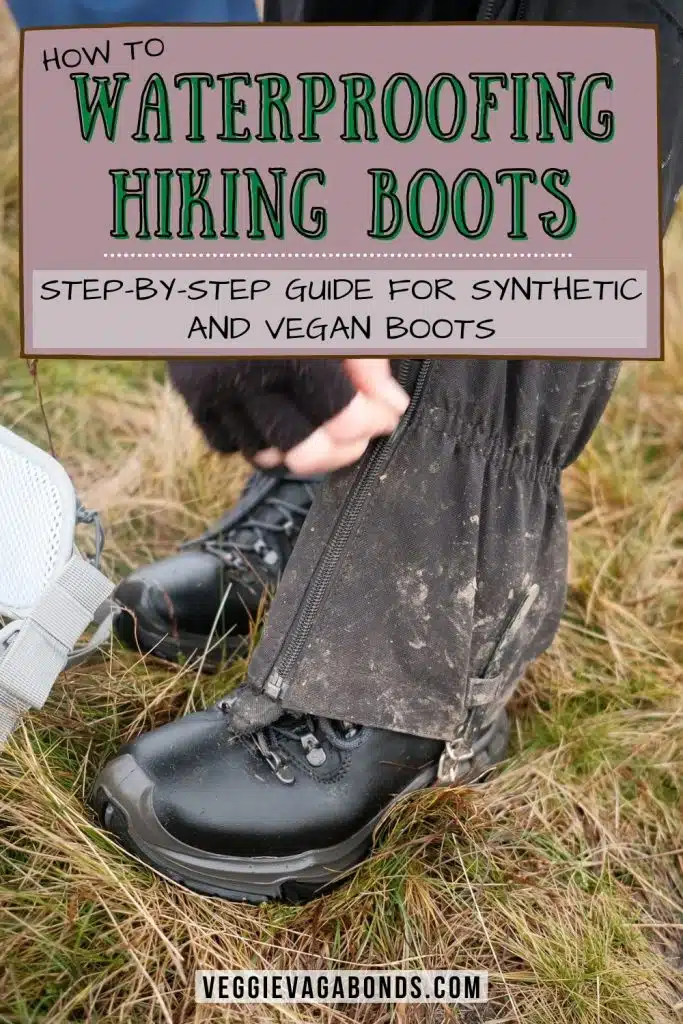Hiking in wet conditions can quickly turn an enjoyable adventure into a miserable experience if your feet get soaked. Waterproof hiking shoes are essential for maintaining comfort and preventing blisters when navigating streams, muddy trails, or rainy weather. However, even shoes marketed as “waterproof” can benefit from additional treatment. This guide provides a comprehensive look at how to effectively waterproof your hiking shoes, ensuring dry and happy feet on your next outdoor excursion. We will explore various methods and products, helping you choose the best approach for your specific needs and shoe type.
Why Waterproof Your Hiking Footwear? Exploring the Benefits
While some hiking shoes come with a waterproof membrane like Gore-Tex, the factory-applied Durable Water Repellent (DWR) coating can wear off over time. Waterproofing offers several advantages:
- Enhanced Comfort: Dry feet are comfortable feet. Waterproofing prevents the discomfort and potential health issues associated with prolonged exposure to moisture.
- Blister Prevention: Wet socks create friction, significantly increasing the risk of blisters. Waterproofing helps keep your socks dry, reducing this risk.
- Extended Shoe Lifespan: Constant exposure to water and mud can damage the materials of your hiking shoes. Waterproofing helps protect them, prolonging their lifespan.
- Improved Performance: Maintaining dry feet allows you to focus on the trail ahead, improving your overall hiking experience.
Choosing the Right Waterproofing Product for Your Hiking Shoes
Selecting the appropriate waterproofing product is crucial for achieving optimal results. Different materials require different treatments. Here’s a breakdown:
- Identify Your Shoe Material: Are your shoes leather, nylon, or a combination of both? Check the manufacturer’s label or website for material information.
- Consider the Type of Waterproofing: Sprays, waxes, and creams are available. Sprays are generally easier to apply but may not last as long. Waxes and creams offer more robust protection but require more effort.
- Read Product Reviews: See what other hikers are saying about the effectiveness and durability of different products.
- Test in a Small Area: Before applying any product to the entire shoe, test it in a small, inconspicuous area to ensure it doesn’t discolor or damage the material.
Step-by-Step Guide: Waterproofing Your Hiking Shoes
Follow these steps for effective waterproofing:
- Clean Your Shoes: Remove dirt, mud, and debris with a brush and mild soap. Allow your shoes to dry completely before proceeding.
- Apply Waterproofing Product: Follow the product instructions carefully. Typically, this involves spraying or applying a thin, even coat to the entire shoe surface.
- Pay Attention to Seams and Crevices: These areas are particularly vulnerable to water penetration. Ensure they are thoroughly treated.
- Allow to Dry: Let your shoes dry completely, as recommended by the product instructions. This may take several hours or even overnight.
- Apply a Second Coat (Optional): For extra protection, consider applying a second coat of waterproofing product.
Waterproofing Product Comparison: Sprays vs. Waxes/Creams
| Feature | Waterproofing Sprays | Waterproofing Waxes/Creams |
|---|---|---|
| Application | Easy and quick | More labor-intensive |
| Durability | Generally less durable | More durable and long-lasting |
| Material Compatibility | Suitable for most materials | May be better suited for leather |
| Breathability | Less likely to affect breathability | May slightly reduce breathability |
| Cost | Often less expensive | Generally more expensive |
Maintaining Waterproofing Over Time
Waterproofing is not a one-time task. Regular maintenance is essential to keep your hiking shoes protected. Reapply waterproofing product after several hikes, especially if you’ve been exposed to wet conditions. Clean your shoes regularly to remove dirt and debris, as this can degrade the waterproofing coating. Consider using a shoe conditioner specifically designed for waterproof materials to keep them supple and prevent cracking.
FAQ: Waterproofing Hiking Footwear Questions
- Q: How often should I waterproof my hiking shoes?
- A: It depends on how frequently you hike and the conditions you encounter. As a general rule, reapply waterproofing product every few months or after several hikes in wet conditions.
- Q: Can I use regular waterproofing spray on my hiking shoes?
- A: It’s best to use a waterproofing product specifically designed for hiking shoes. These products are formulated to withstand the rigors of the trail and provide optimal protection.
- Q: Will waterproofing affect the breathability of my shoes?
- A: Some waterproofing products can slightly reduce breathability. Choose a product specifically designed to maintain breathability, especially if you hike in warm weather.
- Q: What if my shoes already have a waterproof membrane?
- A: Even shoes with a waterproof membrane benefit from regular waterproofing. The DWR coating on the outer material wears off over time, and reapplying it helps maintain the overall waterproofness of the shoe.
- Q: How do I know if my shoes need to be re-waterproofed?
- A: A good indication is when water no longer beads up on the surface of the shoe and instead soaks into the material.
Waterproofing your hiking shoes is a crucial step in ensuring a comfortable and enjoyable outdoor experience. By choosing the right product, following the proper application techniques, and maintaining your shoes regularly, you can keep your feet dry and protected from the elements. Remember to identify the material of your shoes and select a waterproofing product that is compatible. Regular cleaning and re-application of the waterproofing treatment are essential for maintaining optimal performance. Take the time to waterproof your shoes before your next hike, and you’ll be rewarded with dry, happy feet, allowing you to fully appreciate the beauty of the trail. Therefore, properly waterproofed shoes are a vital piece of equipment for every hiker.

